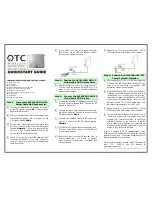
LISA-U1 series - System Integration Manual
3G.G2-HW-10002-3
Preliminary
System description
Page 73 of 125
1.11.1.6
Connection to an external analog audio device
The differential analog audio input / output can be used to connect the module to an external analog audio
device. Audio devices with a differential analog input / output are preferable, as they are more immune to
external disturbances.
If the external analog audio device is provided with a differential analog audio input, the
SPK_P
/
SPK_N
balanced output of the module must be connected to the differential input of the external audio device through
a DC-block 10 µF series capacitor (e.g. Murata GRM188R60J106M) to decouple the bias present at the module
output (see
SPK_P
/
SPK_N
common mode output voltage in the
LISA-U1 series
Data Sheet
[1]). Use a suitable
power-on sequence to avoid audio bump due to charging of the capacitor: the final audio stage should be
always enabled as last one.
If the external analog audio device is provided with a single ended analog audio input, a proper differential to
single ended circuit must be inserted from the
SPK_P
/
SPK_N
balanced output of the module to the single
ended input of the external audio device. A simple application circuit is described in Figure 41: 10 µF series
capacitors (e.g. Murata GRM188R60J106M) are provided to decouple the bias present at the module output,
and a voltage divider is provided to properly adapt the signal level from the module output to the external audio
device input.
The DC-block series capacitor acts as high-pass filter for audio signals, with cut-off frequency depending on both
the values of capacitor and on the input impedance of the external audio device. For example: in case of
differential input impedance of 600 , the two 10 µF capacitors will set the -3 dB cut-off frequency to 53 Hz,
while for single ended connection to 600 external device, the cut-off frequency with just the single 10 µF
capacitor will be 103 Hz. In both cases the high-pass filter has a low enough cut-off to not impact the audio
signal frequency response.
The signal levels can be adapted by setting gain using AT commands, but additional circuitry must be inserted if
the
SPK_P
/
SPK_N
output level of the module is too high for the input of the audio device.
If the external analog audio device is provided with a differential analog audio output, the
MIC_P
/
MIC_N
balanced input of the module must be connected directly to the differential output of the external audio device.
Series capacitors are not needed since
MIC_P
/
MIC_N
pins are provided with internal 100 nF capacitors for DC
blocking (see
LISA-U1 series Data Sheet
If the external analog audio device is provided with a single ended analog audio output, a proper single ended to
differential circuit has to be inserted from the single ended output of the external audio device to the
MIC_P
/
MIC_N
balanced input of the module. A simple application circuit is described in Figure 41: a voltage
divider is provided to properly adapt the signal level from the external audio device output to the module input.
The signal levels can be adapted by setting gain using AT commands, but additional circuitry must be inserted if
the output level of the audio device is too high for
MIC_P
/
MIC_N
. Please refer to Figure 41 for the application
circuits.
To enable the audio path corresponding to the differential analog audio input / output, please refer to
u-blox AT Commands Manual
[2]: AT+USPM command.
To tune audio levels for the external device please refer to
u-blox AT Commands Manual
[2] (AT+USGC,
AT+UMGC commands).
















































